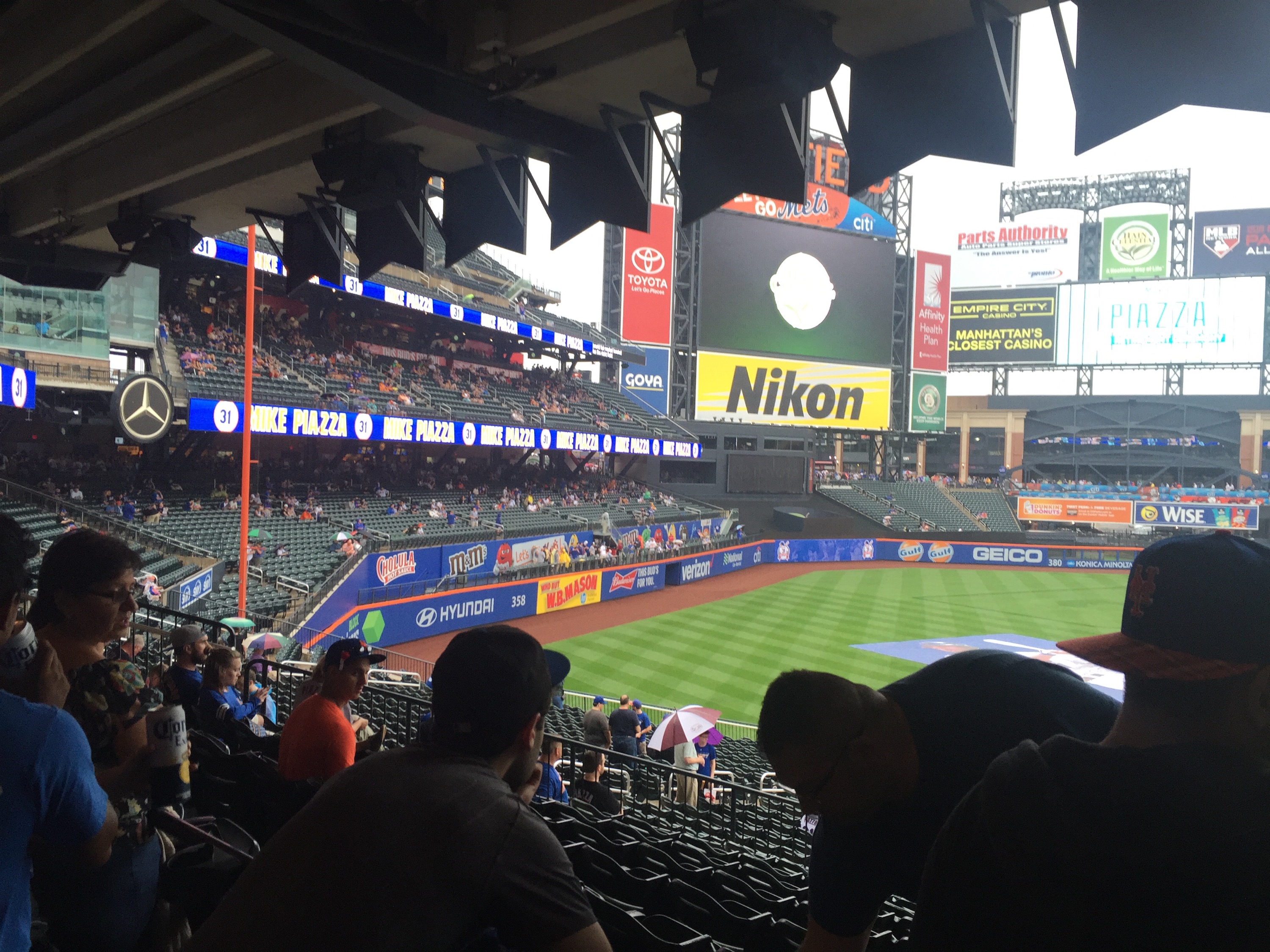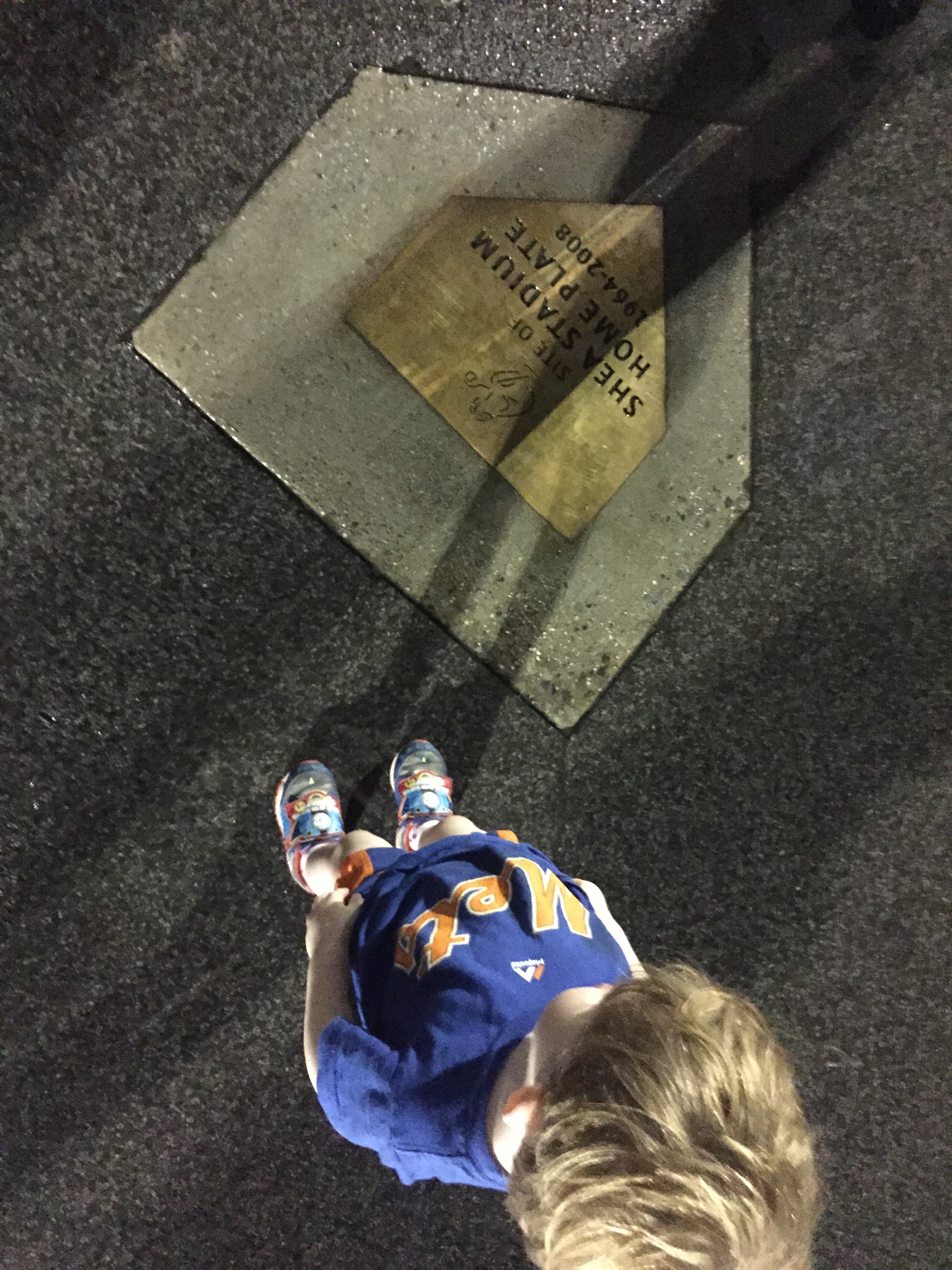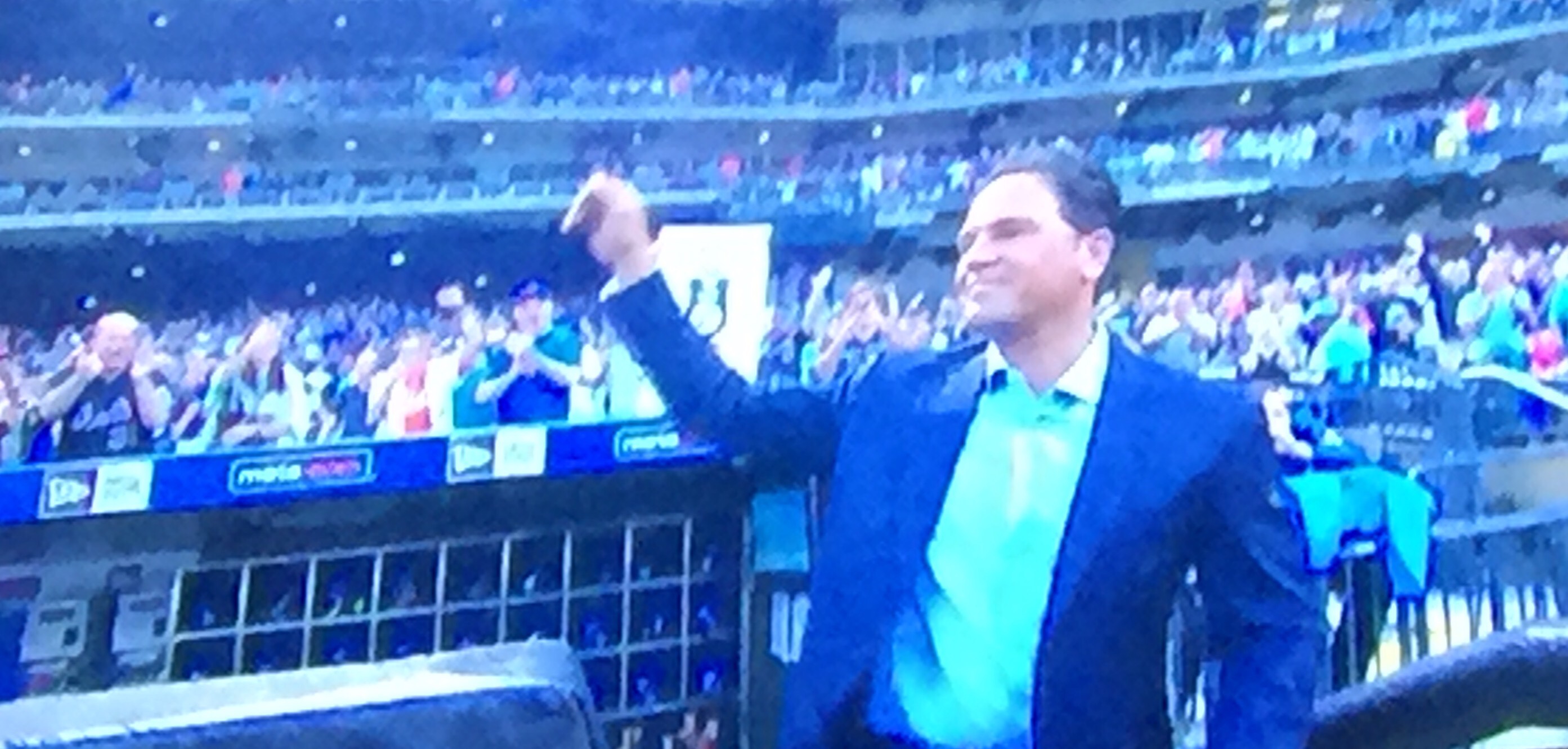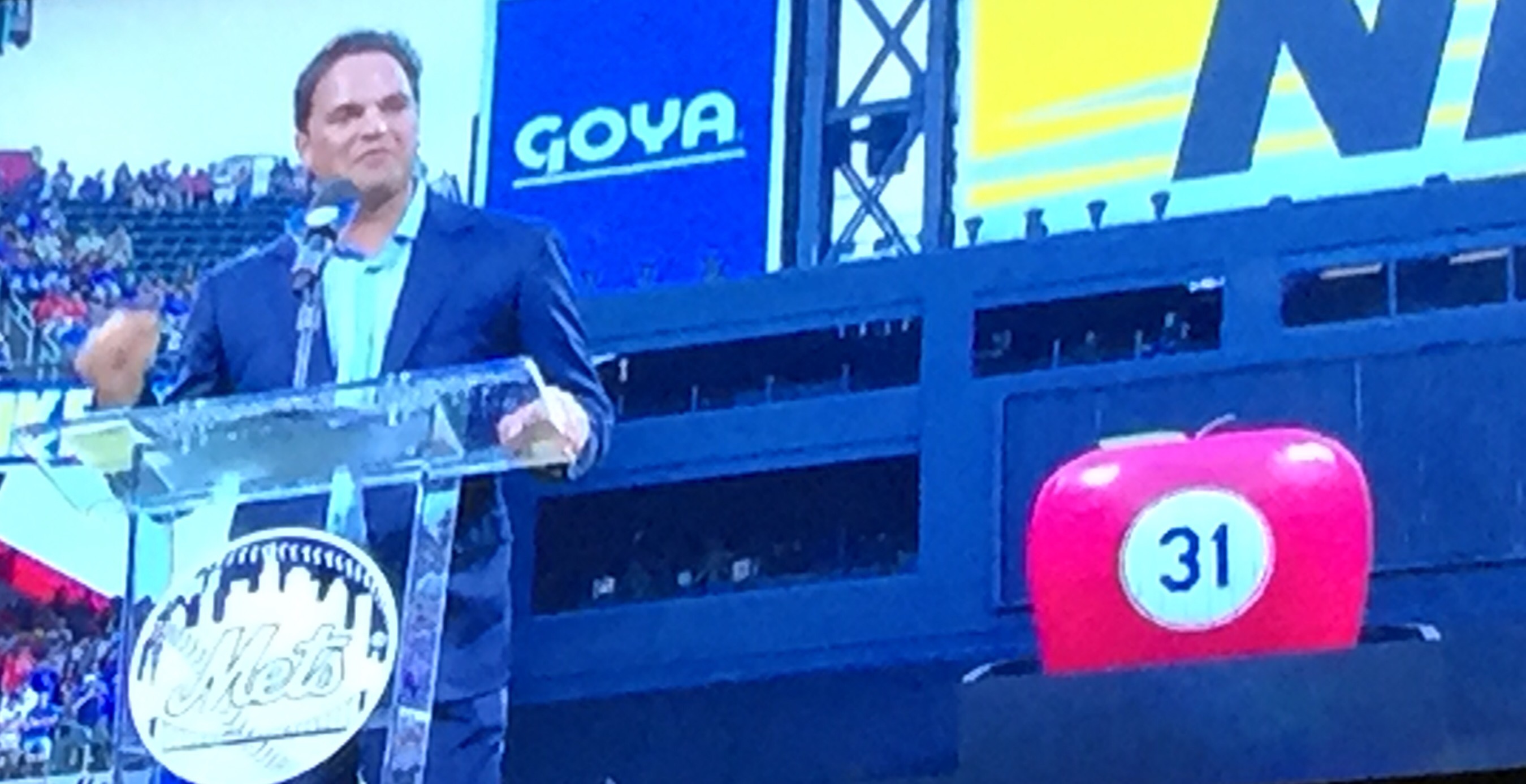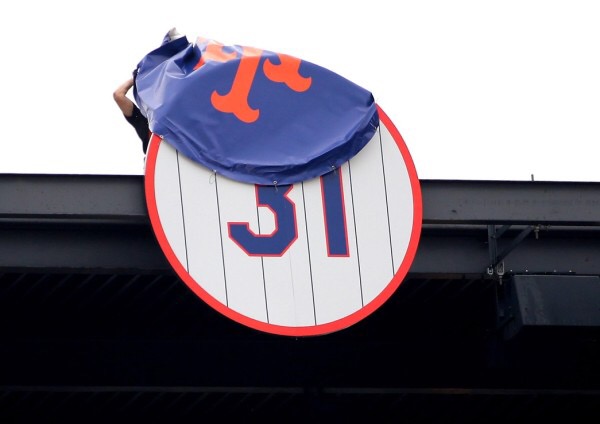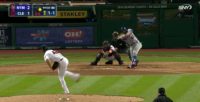Pedro Martinez
The IBWAA Rollie Fingers Award is given to the best relief pitcher in the American League. In the history of this award, there has been no easier choice as to who should win the award:
1st – Zach Britton
All Britton did this year was have probably the best season a reliever has probably ever had in major league history. His 2016 season was better than any year Mariano Rivera had. It was better than Dennis Eckersley‘s 1992 Cy Young and MVP season for the Oakland Athletics.
Consider for a second that Pedro Martinez‘s dominant 200 season garnered him the second highest ERA+ ever recorded at 291. This narrowly trailed Tim Keefe‘s 1880 season where he recorded a 293 ERA+. Britton’s ERA+ this season is 827. No, that’s not a typo. It is actually that high. It should be noted that Britton does not have enough innings to qualify to have his ERA+ recorded as the highest ever. Still, it speaks to just how dominant Britton was.
Among major league relievers, he has the lowest ERA (.054) and the highest WAR (4.3), and it wasn’t particularly close in either category. On the season, Britton made 69 appearnces going 2-1 with 47 saves, a 0.836 WHIP, 9.9 K/9, 827 ERA+, and a 1.94 FIP. This has now become the gold standard upon which all reliever seasons will be judged.
2nd – Brad Brach
Britton’s season completely overshadowed his own teammate’s incredible season. The irony is Brach’s season actually helped Britton put up some of the dominant numbers he put up this season by locking down the eighth inning.
In 2016, Brach made 71 appearances pitching 79.0 innings. He wouldn’t lead the majors or the American League in holds because quite frankly, the Orioles starting rotation wasn’t good this season. As a result, the Orioles starters would hand the bullpen either deficits or tie games to the bullpen. Brach would do his job to turn these scenarios into victories. In his 71 appearances, Brach earned a eye-popping 10 wins out of the bullpen. For the season, he was 10-4 with two saves, 24 holds, a 2.05 ERA, 1.038 WHIP, 10.5 K/9, 216 ERA+, and a 2.92 FIP. Overall, it was either him or Addison Reed as the best set-up man in the major leagues.
3rd – Sam Dyson
Not only did Britton overshadow his teammate, he also overshadowed another dominant closer who had a breakout season. Dyson had about as dominant a season you will see any closer have in baseball. However, if he was looking to get noticed, he had his great season the wrong year.
In what has been Dyson’s first season as a closer, he has gone 3-2 with 38 saves, a 1.223 WHIP, 7.0 K/9, 186 ERA+, and a 3.62 FIP. For a Rangers team that won almost all of their games by a razor thin margin, Dyson’s job as the closer was made all the more important. His 38 saves and 2.9 WAR would have been the best for a closer in the American League this season. However, he happened to have this great year at the same time Britton had his otherworldly season.
Back in 2007, the Mets collapsed in part due to a rash of pitcher injuries. Pedro Martinez missed most of the year following offseason surgery to repair a torn labrum. An injured Orlando Hernandez (El Duque) had to be moved out of the rotation and into the bullpen. With they myriad of injuries, Mike Pelfrey was put in the rotation before he was truly ready. Brian Lawrence made a few poor starts. With the walls crashing in on the Mets and the Phillies gaining on them, the Mets had to turn to Philip Humber.
Humber was the third overall pick in the 2004 draft. In his career, he never lived up to that billing. It could have been that he was damaged goods coming from Rice University, who is well known for abusing pitcher arms. He did have ulnar collateral ligament reconstruction surgery before his major league debut. It could be that he was rushed through the system never being given proper time to develop. It could any single factor or any combination thereof. It could just be that he just wasn’t good enough to be a top line starting pitcher.
He certainly wasn’t on September 27, 2007. His final line was four innings, six hits, five runs, five earned, two walks, no strikeouts, and one home run allowed. Humber did his best to battle that night, but he either wasn’t ready or wasn’t capable of winning a big game like that. The only reason he didn’t take the loss was the Mets staked him to a 4-0 and a 6-2 lead. It would be his last game as a Met as he would be part of the Johan Santana trade. It was also the last day the Mets would have sole possession of first place as the loss would drop them to only one up in the division.
Like in 2007, the starting pitching is dropping like flies. Matt Harvey, Steven Matz, and even Jon Niese have found themselves on the disabled list. Logan Verrett has served as this year’s Lawrence. Robert Gsellman serves as this year’s Pelfrey. However, Lugo isn’t quite this year’s Humber. They really have nothing in common.
Whereas Humber was a high draft pick, Lugo was a 34th round draft pick. While Humber was pushed through the minors without mastering a level, Lugo has performed at each and every level having to prove himself over and over again. During his career, Humber had trouble developing a real outpitch. Conversely, Lugo has a terrific curveball that has already fooled Anthony Rizzo, who is a terrific major league hitter. More importantly, the main difference between Humber and Lugo is Lugo has already had success as a pitcher for the Mets.
In nine appearances as a reliever, Lugo pitched 17.0 innings and had a 2.65 ERA. When injuries forced him to make an unexpected start, Lugo was better than anyone could have imagined. He was not only good, but he was efficient. When Lugo walked off the mound, he had pitched 6.2 innings allowing seven hits, one run, one earned, and one walk with three strikeouts. At a minimum, Lugo has shown everyone he has the capability of being a good and reliable major league pitcher.
During this season, this Mets team has been compared to past Mets teams that have failed. Namely, they have been compared to the 1987, 2001, and 2007 teams. You can go up and down the line and compare different aspects of those teams to this current team. However, those comparisons need to stop with Lugo as everyone should have faith when Lugo steps on the mound.
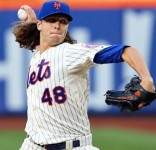
In Jacob deGrom‘s first start of the year, he went out and dominated the Phillies. Normally, this would be reason to celebrate because it’s a sign deGrom is picking up where he left off last season. Unfortunately, there were some real problems with the start.
Most importantly, deGrom left the start with right lat tightness. This was the latest injury deGrom has had this year. During Spring Training, deGrom also a sore thigh and a stiff back. Neither of the latter two injuries prevented him from getting ready for the 2016 season or taking the mound against the Phillies. He’s been nicked up, but as of right now, there is no discussion of putting deGrom on the disabled list.
There’s something important to note here. deGrom is suffering from a TIGHT lat, not a TORN lat like Steven Matz suffered last year. Any discussion of deGrom missing any period of time is very premature.
With that said, you are left to wonder if any one of these injuries, or a combination thereof, has helped cause deGrom’s drop in velocity.
After a 2015 season in which deGrom averaged a 96 MPH fastball, his velocity has noticeably dipped this year. During Spring Training, deGrom was throwing his fastball between 91 – 93 MPH. Despite hopes that he could ramp it up during the regular season, deGrom’s fastball only averaged 93 MPH. So while he ramped it up a bit, we was still three MPH slower than where he was last year.
It’s natural to question if the dip in velocity is due to deGrom getting nicked up here and there. On MLB Tonight, Pedro Martinez presented an alternative theory. He thinks deGrom is dropping his arm when he’s pitching thereby causing the decreased velocity. Therefore, if deGrom improves his mechanics, he should be able to regain his velocity.
Even if deGrom never finds his velocity, he can still be a very effective pitcher. In 2014, deGrom’s fastball averaged somewhere between 93 – 94 MPH. That year, he was 9-6 with a 2.69 ERA in 22 starts. By the way, this was good enough for him to be named the National League Rookie of the Year.
While deGrom’s health and velocity is something to keep an eye on, we do know that deGrom can pitch very effectively even without the 96 MPH fastball. Most likely, deGrom just needs a day or two off to get some rest. Hopefully, he gets it now because once his son is born, he’s not getting any rest or sleep.
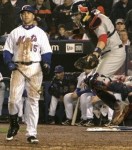
According to WAR, Carlos Beltran is the sixth best Met of all-time. He’s higher ranked than recent Hall of Fame inductee Mike Piazza. He’s a future Hall of Famer. The end of his Mets tenure was the beginning of Terry Collins tenure. When Beltran speaks, he deserves your full attention.
With that said, a person should always pick their spots when to interject an opinion. In his interview with George A. King, III, Beltran offered his opinions on Terry Collins sending Matt Harvey out for the ninth in Game 5 of the World Series. Collins’ decision ranks right up there with Grady Little leaving Pedro Martinez in during Game 7 of the 2003 ALCS. It’ll be talked about for generations. Everyone will have a perspective. For what it’s worth, here was Beltran’s take on Collins sending Harvey back out there:
He was looking down and I felt that he wanted to take Harvey out. But at the same time, Harvey was pitching such a good game and Harvey wanted that moment. He went with what Harvey showed him and not what he was thinking. That’s an experience for him. Later on [taking Harvey out] will happen. He will say,’My friend, I will give you a kiss of I have to, but I have to get my closer.’ It was a bad decision to leave him in, but in his heart I felt that he wanted to make a different move.
It’s a fine and reasonable take, but man, I really don’t want to hear Beltran talking about decision that lead to the end of playoff series. Much like the end of the 2015 World Series, his strikeout at the end of the 2006 NLCS will forever haunt Mets fans. For his part, Beltran said he couldn’t do anything with the pitch. To be fair, it was filthy:
However, with that said, he didn’t try to foul it off. He didn’t try to make a fielder make a play. There would be no little groundball up the first baseline. No, Beltran was beat, and he didn’t go down swinging. This doesn’t change the fact that he was a great Met. It doesn’t mean he shouldn’t be a Hall of Famer. It doesn’t even mean his opinion on Collins sending Harvey back out there was wrong.
No, it just means that when it comes to series altering decisions, Beltran’s opinion is the last one I want to hear.
Editor’s Note: this was first published on metsmerized.com
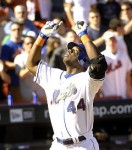
Today is the eighth anniversary of the Johan Santana trade. Over his tenure with the Mets, Santana pitched well to brilliantly when he was able to pitch.
Santana tried to will the Mets into the postseason in 2008. He pitched on three days rest on a bum knee and gave the Mets a brilliant outing, a complete game, three hit, nine strikeout, shut out. It would be the Mets last win at Shea Stadium. It would be his last great season, but not his last great moment. On June 1, 2012, he threw a 134 pitch no-hitter on a surgically repaired shoulder. The first in Mets history. It was effectively the end of his career.
The cost for all of this? Basically, it was Carlos Gomez. Yes, the same one. It’s interesting that it was Gomez because he wasn’t what the Twins initially wanted. They wanted Lastings Milledge.
At that time everyone wanted Milledge. The A’s wanted Milledge in exchange for Barry Zito. The Mets balked in 2006. They balked despite Pedro Martinez‘s injury problems. The Mets thought that highly of Milledge that they were willing to let him possibly stand in the way of a World Series title. He was considered that good. Except, unfortunately, he really wasn’t that good. His stock would go down to the point where he could only fetch Brian Schneider and Ryan Church. That’s a far cry from Barry Zito and Johan Santana.
The lesson here isn’t necessarily that you should always trade prospects. If that’s the case, the Mets wouldn’t have David Wright. No, the lesson is to make sure you are right before trading prospects.
The Mets were wrong about Gomez and Milledge. Most were. Now, Milledge is playing in Japan. Gomez is a two-time All Star. He’s a Gold Glove centerfielder. There are different times the Mets could’ve used him either as an outfielder (possibly avoiding the disastrous Jason Bay signing), or used him as a trade chip. Unfortunately, he wasn’t there because the Mets held onto the wrong prospect.
There are many lessons to learn with Santana, namely about abusing pitcher’s arms. The other lesson is that teams have to be right about their own prospects. By holding onto Milledge, the Mets might’ve lost out on a World Series in 2006. By being wrong about Milledge, the Mets lost out on Gomez’s career.
So whenever the Mets trade a prospect, we should look not just at the return, but also who they didn’t trade. As we saw with the Santana deal, you can still win a trade while still losing out on something else.
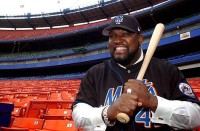
One of the biggest punchlines about Steve Phillips tenure as the Mets GM has been this:
https://twitter.com/metsrewind/status/681155190020554752
Not his personal conduct. No, he’s routinely mocked for the Mo Vaughn trade. To this day, I do not understand the vitriol over the deal. I guess it’s because Mets fans do not realize the Mets won that trade. Seriously.
First, keep in mind the Mets gave up Kevin Appier. That’s it. Yes, the same Kevin Appier the Mets signed after they lost the World Series instead of making big moves to improve the team. Yes, I’m talking about the 2000 offseason, not this one. Appier signed a four year $42 million contract with the Mets.
In his only year with the Mets, Appier was decent going 11-10 with a 3.57 ERA and a 1.185 WHIP. He would then be traded for Mo Vaughn. Appier was good again in 2002. He has a ring despite having a historically bad World Series start. Appier was bad, really bad, in 2003. Despite being owed over $15 million on his deal, he was released. Appier would go back to Kansas City, where he would pitch only 23 innings more between 2003 and 2004 before retiring and putting an end to a very good big league career.
In exchange, the Mets got the impressive batting practice hitter Mo Vaughn (the last Met to wear 42). Say what you will about Mo Vaughn. You’re probably right. His 2002 wasn’t as bad as people remember with Vaughn hitting .259/.349/.456 with 26 homers and 72 RBI. It was good for an OPS+ of 115. It’s more impressive when you consider he missed the 2001 season due to injury. Like Appier, his 2003 was a nightmare. Like Appier, his career was effectively over after the 2003 season.
So why did the Mets win the trade? No, it was not because of this homer:
I was at that game. It was awesome. However, this was Vaughn’s line highlight. In reality, Vaughn’s play had nothing to do with the Mets winning this trade.
No, the Mets won the trade due to Vaughn’s insurance policy. Vaughn’s arthritic knee prevented him from playing again. Like Appier, Vaughn was terrible in 2003, and his career was effectively over. The Angels paid Appier $12 million in 2004 alone to go away. The Mets only owed Vaughn $4.25 million over the next two years. The remainder of the $17 million owed was paid by insurance.
The Mets didn’t do anything with the money found that offseason, but they would invest it the next offseason when they signed Pedro Martinez and Carlos Beltran. So overall, the Mo Vaughn deal was really beneficial to the Mets regardless of whether or not anyone wants to recognize it.
There are still reasons to mock Steve Phillips, but this trade wasn’t one them.

This isn’t a criticism of Sandy Alderson and his staff. This isn’t an issue of this front office being stingy or refusing to go the extra mile to get the player. It’s just that historically the Mets typically do not outbid teams when it comes to the big free agent.
That’s not to say the Mets don’t sign free agents. Obviously, they do. They’ve also overspent and spent big money on some free agents. It’s just that they don’t typically win bidding wars. They especially don’t do so when a big market team is also bidding on the same player. My personal feelings aside, I just don’t see how the Mets outbid everyone for Ben Zobrist. Here are the instances where the Wilpon led Mets outbid everyone for a high priced player:
Jason Bay
In 2009, the Mets signed Jason Bay. In some ways it could be interpreted as the Mets won a bidding war and in others it could be seen as the Red Sox moved on to other players.
Fact is the Red Sox essentially had a four year $60 million contract offer, which may or may not have been pulled due to medical concerns. You can never fully trust Boston’s statements when a player leaves. The fact is the Mets had to offer $6 million extra to bring Bay to New York. The fact also remains the Mets went after Bay instead of going after the much better and much more expensive Matt Holliday.
This isn’t about how Bay fared with the Mets as no one could have reasonable predicted what happened next. This is about the Mets outbidding the Red Sox for a player only after deciding to not even get involved in the bidding for the more expensive, better player.
Carlos Beltran
The Carlos Beltran story is an interesting one. Like Bay, it was also a move made under the Omar Minaya regime.
What’s most interesting about this was the Yankees never got involved in the bidding despite Beltran all but begging them to offer him a contract. Furthermore, the Astros had a limited window to negotiate with Beltran. Under the old free agency rules, the Astros only had until January 7th to re-sign him. If they didn’t, they were barred from re-signing him until May 1st.
The Mets went above and beyond then in Minaya’s first year as GM. The Mets signed Beltran to a then whopping seven year $119 million contract. It was a real power move that the Mets haven’t typically been the Mets strength. There was one other move in 2005 that was uncharacteristic.
Pedro Martinez
Like Bay, the Mets were able to outbid the Red Sox for Pedro Martinez because the Red Sox drew a line in the sand in a player they knew/suspected had questionable medicals. Unlike Bay, the Mets clearly outbid the Red Sox.
The Red Sox thought they had Pedro re-signed giving him the extra year he wanted. The Mets just gave that extra year and money no one thought Pedro could/should get. Like Beltran, this was part of Minaya’s reshaping of the Mets. It’s truly interesting the major deals happened in 2005 when Minaya took over the team. In some ways, it makes you question how much the Madoff Ponzi fallout affected the Mets.
Yes, it clearly limited payroll. However, after 2005, the Mets never truly went the extra mile in seeking to acquire the top free agent on the market. They were initially rebuffed by Carlos Delgado (until he was later obtained via trade). They did give a huge contract to Johan Santana in the wake of the 2007 collapse. However, that was part of a trade and not part of a free agent bidding process.
So while the Mets have at times spent money pre-Madoff, it appears the team does not usually win these free agent bidding contests. Additionally, after 2005, the team has typicall backed off the top free agent on the market that would/could fulfill a need like Jason Heyward.
In any event, it appears if history repeats itself here, the Mets will not get Zobrist. This may or may not be due to the budget. It may due more to an organizational philosophy that was in place before Sandy Alderson ever became the GM.
